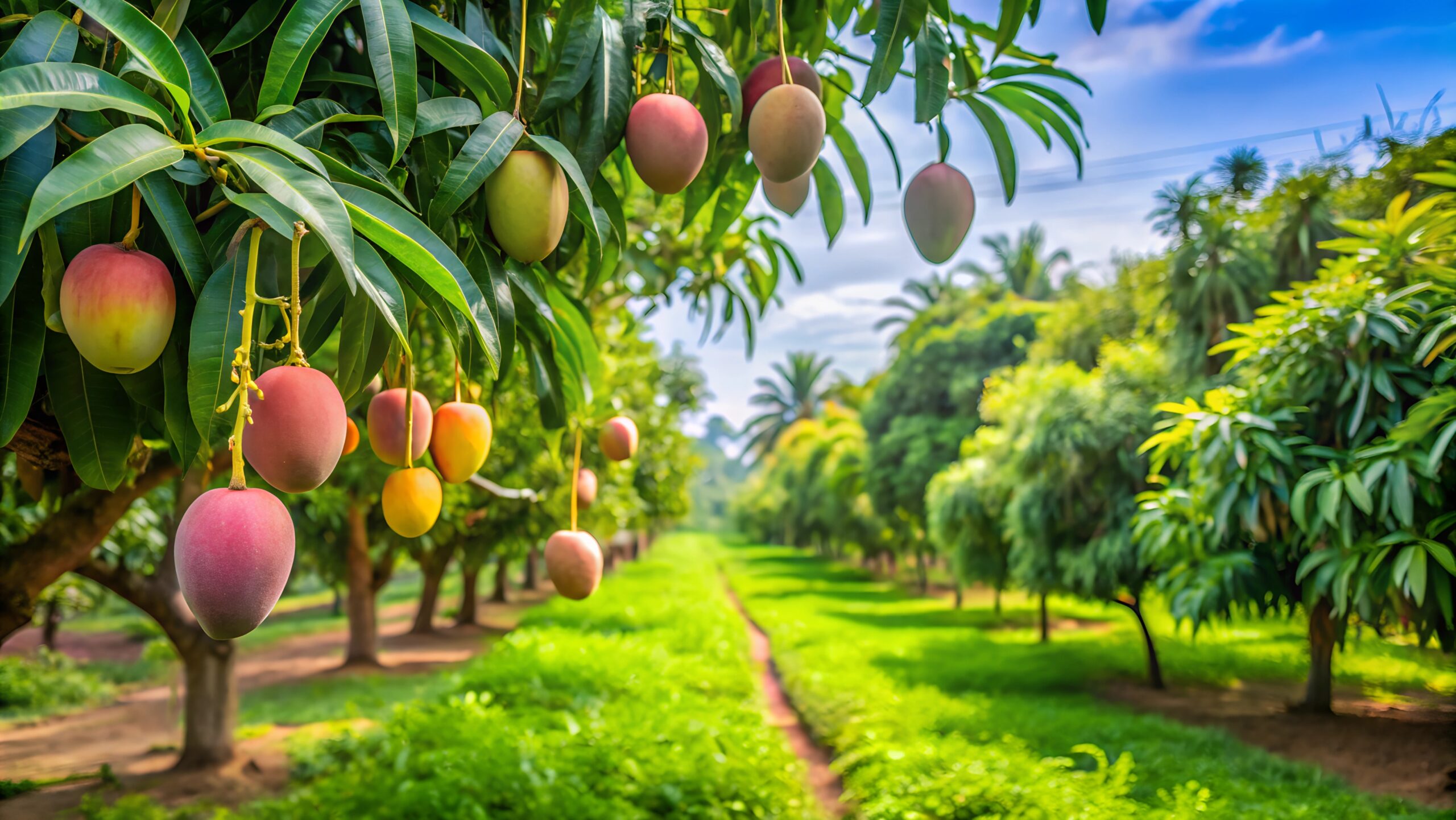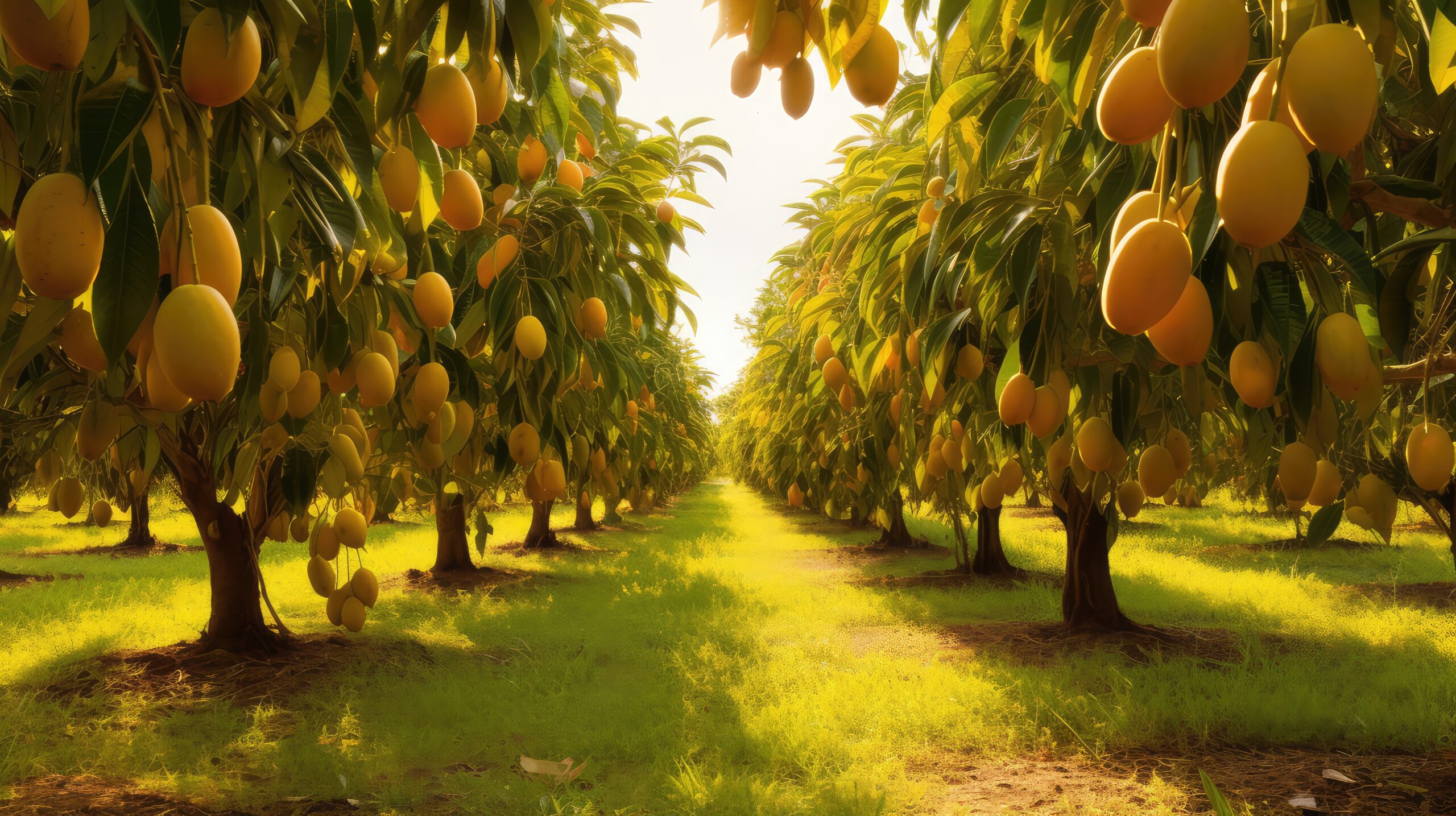📝 Introduction:
Mangoes are not just a tropical delight; they’re a lucrative crop for Indian farmers. With modern techniques like hydroponic farming rising in popularity, many wonder: Is hydroponic mango farming profitable? In this article, we compare hydroponic mango farming with traditional soil-based methods to determine which one enhances nutrition, yield, and income. Whether you’re a beginner or a seasoned farmer, this guide will help you make an informed decision.
🌱 What is Hydroponic Mango Farming?
Hydroponic mango farming involves growing mango trees without soil, using a nutrient-rich water solution. This method falls under smart agriculture solutions and is designed to maximize yield, save water, and reduce dependency on weather conditions.
🌿Traditional Mango Farming Explained
Traditional mango farming uses natural soil and seasonal irrigation. Though it’s been used for centuries, it may face issues like unpredictable weather, pest attacks, and lower water efficiency. However, it’s commonly used in organic mango farming.
📊 Key Differences Between Hydroponic and Traditional Mango Farming
| Feature | Hydroponic | Traditional |
|---|---|---|
| Soil Use | No | Yes |
| Water Usage | 70–90% less | High |
| Setup Cost | High | Moderate |
| Space Efficiency | High | Low |
| Yield Potential | High | Moderate |
| Pest Control | Easier | Challenging |
| Nutrient Control | Precise | Limited |
This highlights how water-saving farming techniques give hydroponic farming an edge in sustainability.
💰 Is Hydroponic Mango Farming Profitable?
Hydroponic farming is a high-investment, high-return model. The cost of hydroponic mango farm setup can be steep initially (₹8–15 lakh/acre), but mango yield in hydroponic system vs soil is significantly higher, often leading to quicker ROI.
👉 Why Hydroponic Mango Farming is Gaining Popularity in India
Hydroponic mango farming is no longer just a futuristic concept—it’s becoming a mainstream solution for land and water scarcity in India. With increasing awareness about sustainable and eco-friendly farming, more agripreneurs are shifting to this method to maximize space, reduce water usage, and increase profit margins.
Government schemes and startup grants under India’s agritech initiatives are also fueling this shift. Hydroponic setups are now being used in urban and peri-urban areas, where traditional farming isn’t feasible. By controlling climate and nutrients, farmers can ensure year-round mango production, tapping into off-season demand and premium pricing.
In addition to that, hydroponics aligns with smart agriculture solutions, enabling automation, real-time data tracking, and efficient resource management. It’s ideal for new-age farmers who want to blend technology with agriculture for better outcomes.
🥭Nutrient Content in Hydroponically Grown Mangoes
Hydroponic mangoes can be tailored for higher nutrient content, ensuring better taste, higher antioxidant levels, and cleaner produce, supporting farm-to-table mango production and eco-friendly farming standards.
👨🌾 How to Start Mango Farming in India (For Beginners)
Mango Farming for Beginners: Steps to Follow
- Select a location based on climate and water availability.
- Choose high-yield mango varieties like Alphonso, Kesar, or Mallika.
- Decide between hydroponic or traditional method.
- Set up your infrastructure (polyhouse, water system for hydroponics).
- Plan for organic or sustainable farming practices.
- Register under agribusiness opportunities in India to gain subsidies and support.
👉 H2: Challenges and Considerations Before Starting Hydroponic Mango Farming
While hydroponic mango farming has many benefits, it’s important to understand the challenges before diving in. The initial setup cost is significantly higher than traditional methods. You’ll need to invest in a polyhouse, climate control systems, water filtration, and automated nutrient delivery units.
Moreover, hydroponic farming demands technical knowledge and regular monitoring. Without the right expertise, you may struggle to maintain the balance of pH levels, nutrients, and environmental conditions—leading to poor yield or plant stress. This makes training or expert consultation essential.
Finally, market access and awareness are still growing. Since hydroponically grown mangoes are relatively new in the Indian market, it’s crucial to build a brand that emphasizes clean, nutrient-rich, and sustainable produce. With the right strategy and support, these challenges can be transformed into long-term advantages.
❓ FAQs – Long-Tail Keyword Questions Answered
Q1: Is hydroponic mango farming profitable?
Answer: Yes. Despite higher setup costs, it yields more mangoes per square foot, saves water, and allows year-round growth, making it ideal for modern agribusiness models.
Q2: What is the difference between hydroponic and traditional mango farming?
Answer: Hydroponics uses a soilless water-based system and offers better nutrient control and yield, while traditional farming depends on natural soil and weather, with a lower setup cost.
Q3: What’s the best method for growing mangoes in India?
Answer: For long-term profit and efficiency, hydroponic farming is ideal in controlled environments. For large-scale, low-cost cultivation, traditional methods are still widely preferred.
Q4: How much does it cost to start a hydroponic mango farm?
Answer: Costs vary from ₹8 to ₹15 lakh per acre, depending on infrastructure, polyhouse type, and automation levels.
Q5: What are the top sustainable farming practices for mangoes?
Answer: Drip irrigation, organic pest control, hydroponic systems, composting, and intercropping are top sustainable and eco-friendly farming methods.
✅ Final Thoughts
Both hydroponic and traditional mango farming have their pros and cons. If you’re focused on profitability, resource optimization, and nutrition, hydroponic mango farming is the future. But for cost-effective, large-scale farming, the traditional approach still holds strong. Whichever you choose, aligning with smart agriculture solutions and sustainable practices is key to long-term success in Indian agriculture.








